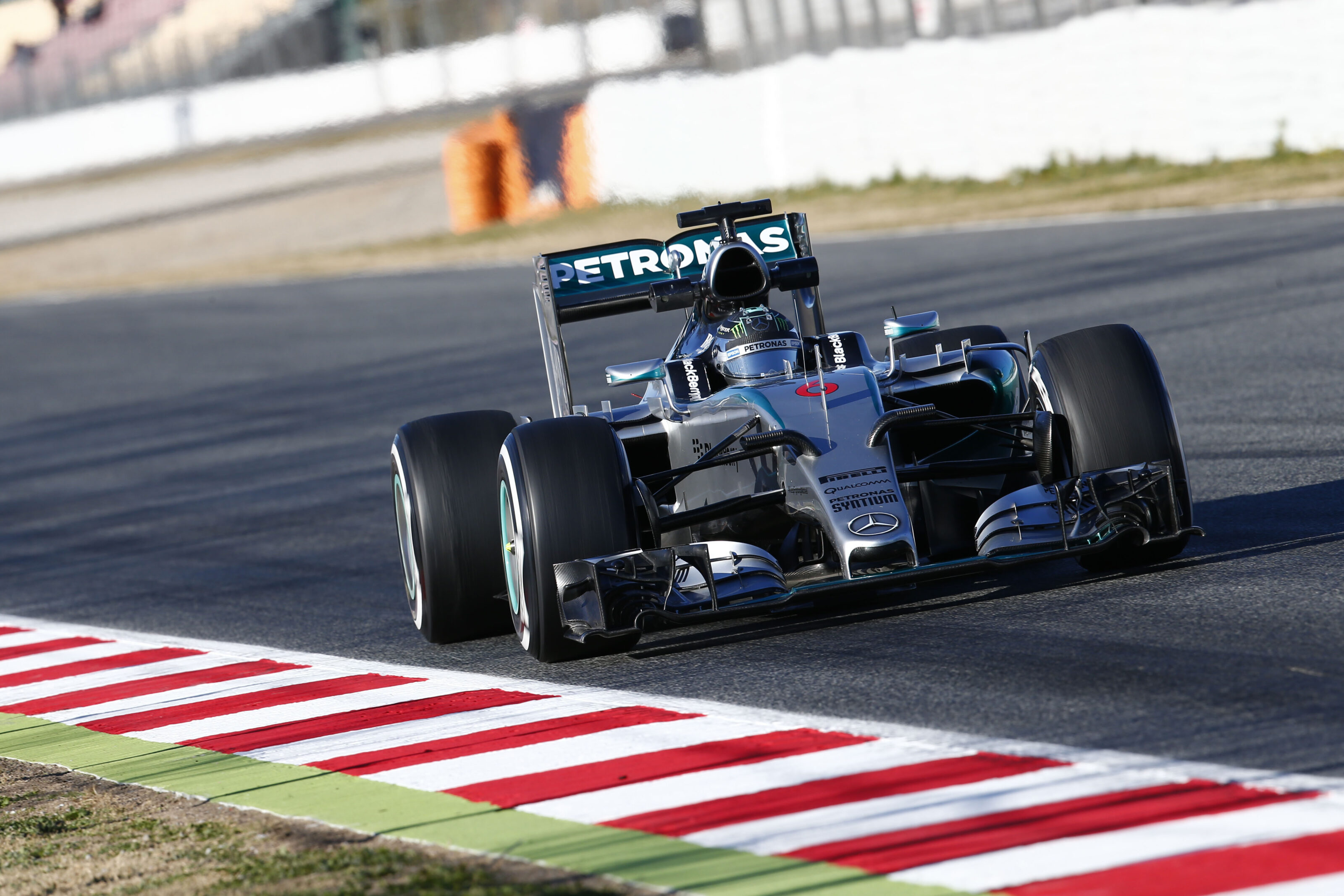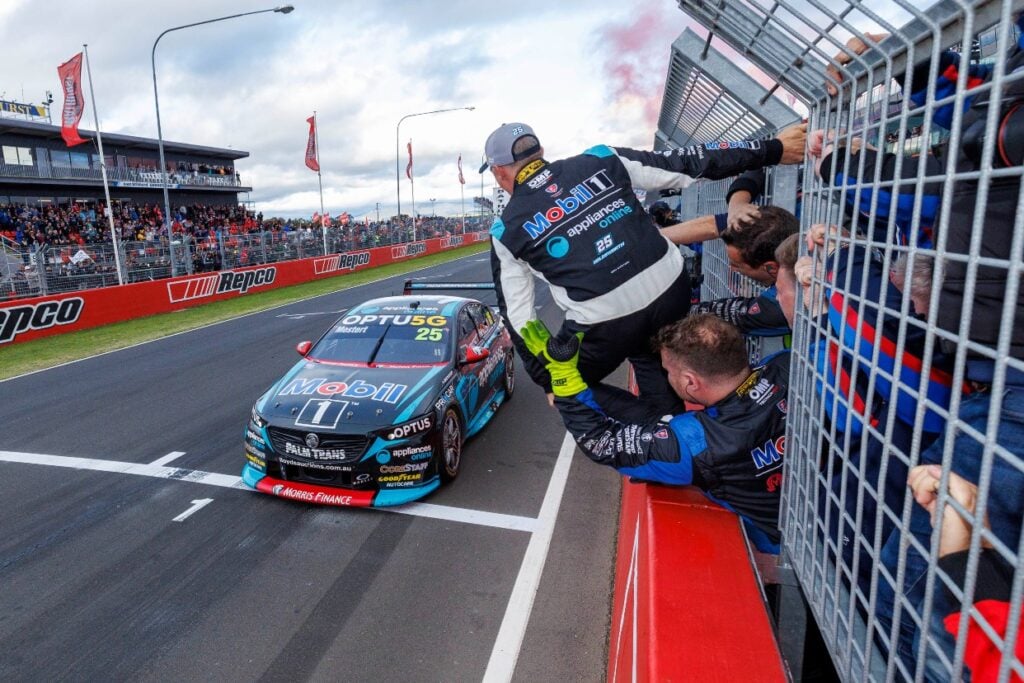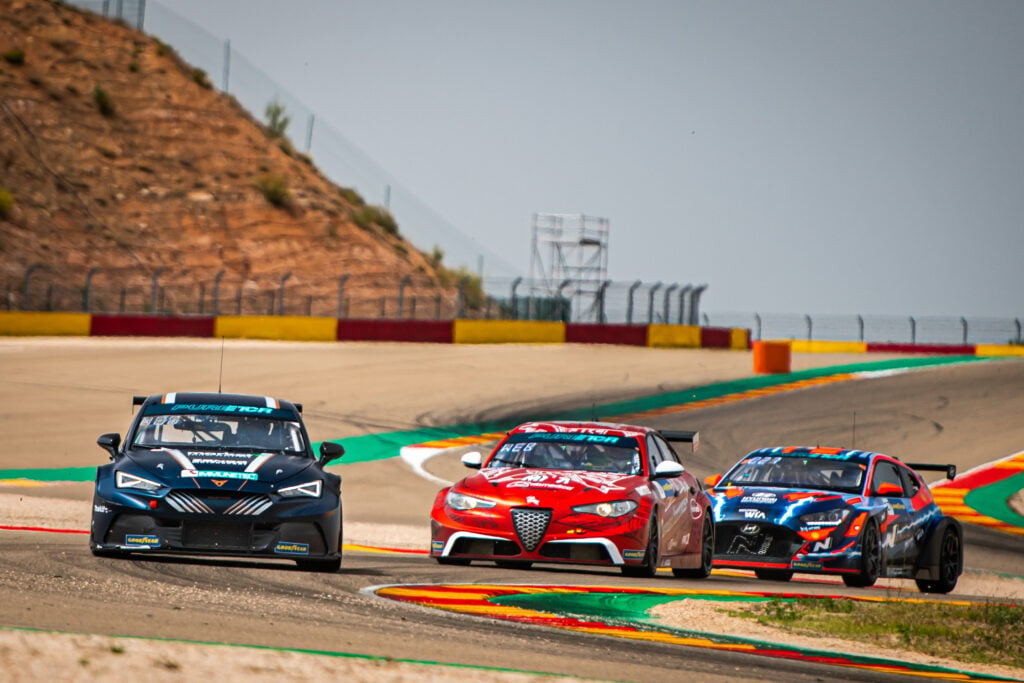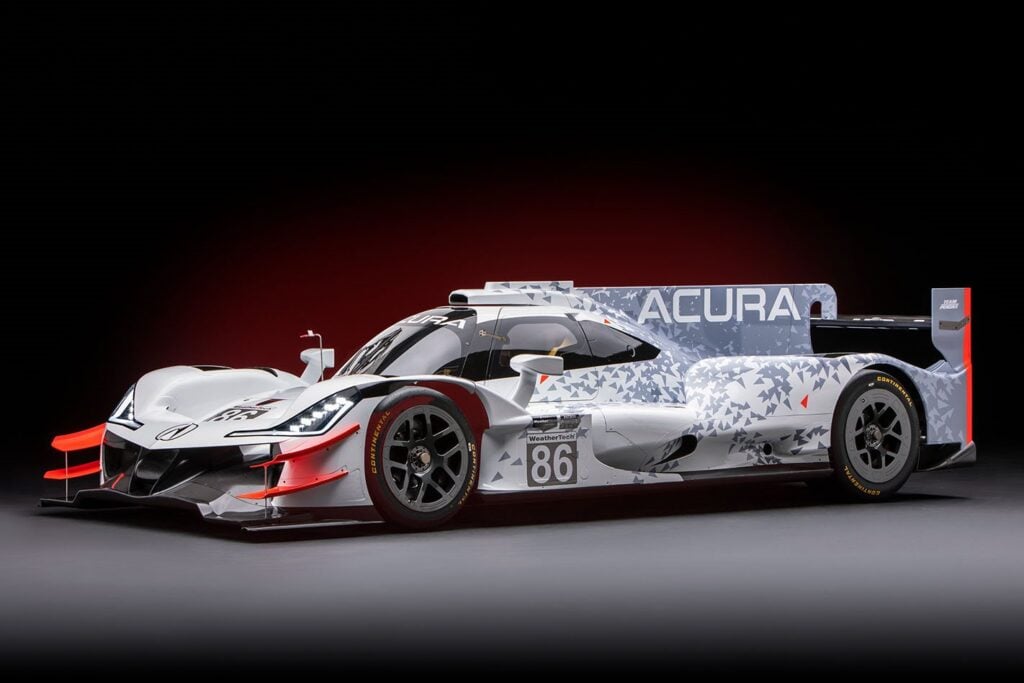Formula One bursts back into action this time next week at Albert Park and Wheels goes behind the scenes with the world champions for this insight into a highly anticipated GP season
FOR Formula One, this is the real New Year’s Day.
I am standing in a pit garage at Silverstone, three days before the start of the first official test at Jerez, where the new Mercedes F1 W06 will be unveiled to the press.
The world champion team is here for a ‘filming day’. These days are tightly controlled by the FIA to limit how much the teams can learn about their cars outside the official, FIA-controlled testing in Spain. The cars can do no more than 100km, and on special tyres that would spit Lewis off if he tried more than quarter-throttle.
And this is England in winter, so the temperature is barely above freezing and there’s a fine fall of snow. Pirelli doesn’t offer a snow tyre option for F1 cars.
The atmosphere is pleasingly, surprisingly shambolic.
The engineers scoff steaming lunches of bad chicken curry in styrofoam boxes bought from the track canteen. There are abandoned coffee cups everywhere. A truck driver in his hi-vis jacket has wandered in and is watching.
But this is still an important and very private moment for the team. I’ve been told that I can’t take photos, or tweet about where I am.
Lewis and Nico might just be trundling around, but there are still a dozen engineers sitting behind laptops on fold-out trestle tables observing every detail of that trundle, each screen showing up to six traces from the car.
I’m talking to the team’s technical director, Paddy Lowe, when the clock strikes for the start of the new season.
Over Paddy’s shoulder – and the truck driver’s – I can see the still-secret car; on stands but otherwise ready to pull out, its engine a low, loud blare even at idle.
Lewis walks in from the back of the garage, his pale race suit like a halo among the greys and blacks of the team. He hops in, and surprisingly quickly the car drops down, he catches first gear and pulls out.
We’ve just seen him drive the very first metres towards what most expect will be a third World Championship.
Welcome to the weird world of F1 between seasons.
Since 2009, in an attempt to cut costs, the teams have been limited to 15,000ks of testing each year, most of it in the three, four-day official sessions in Spain which all the teams attend – or at least those teams that haven’t gone bankrupt and have their cars together in time.
With little to do between seasons, the drivers largely disappear, and the engineers retreat into their factories for the long, dark, northern European winter and pore over the regulations, trying to find the slightest edge over their rivals.
It’s astonishing how teams working in total isolation generally end up producing cars that are so close in performance at the first race. But not always. Last season saw Mercedes dominate, thanks largely to the talents of Lewis and Nico, and the estimated 40-80kW power advantage of their engine.
The team knows, but won’t tell me, the gain they’ve made over last year’s car in every area. But what they won’t know until the first race is whether they’ve done enough to maintain their advantage over the other teams.
The official test sessions don’t help. They’re the Formula One races you don’t see; they’re not televised, and the race is to shake out every problem in a hugely complex machine in a very short space of time.
Some teams disguise their true pace; mid-table teams often try to give their sponsors some value with a headline-grabbing, low fuel-load fastest time of the day, which they will never repeat in race conditions.
Lewis eats a Nando’s in the clubhouse after his drive, and I ask him how much attention he pays to the other teams in testing.
“It’s like one percent,” the world champion tells me. “You are so focused on your own car. It’s a serious job.
“You try to learn as much as you can because you only have six days each, and it’s not a lot of testing to really understand the car, to understand the tyres.
“Obviously at the end of the day you see some times, but it’s irrelevant because one car might be 10 kilos and the other car…
“It doesn’t actually mean anything. It’s not really till the first race, till Friday practice that you really, really know that, okay, you’re good.”
Does Paddy pay any attention to the other teams?
“It depends how much trouble you’re in,” he says. “I’ve been in winter testing where there was no time to look outside our own garage.
“But that’s the thing about the winter. You have no idea where your threat is going to come from. We won’t really know until the first race, because even as we go into testing, you can see cars that look strong or weak, but it’s only an impression. The data’s too noisy.
“The other threat this time of year is whether people bring in some significant innovation that you haven’t thought of. That’s another way of leap-frogging your way up the grid. So if I do get time to look at the cars in the next few days, I’ll be looking for something novel on there that we haven’t thought of. The trouble with big innovation is you don’t realise the opportunity was there until you’ve stumbled upon it.”
Andy Cowell is the team’s powertrain chief. I get the sense from the row of guys with laptops that the FIA’s efforts to stop the teams learning anything about the car on filming days aren’t entirely successful, and that the teams will exploit any opportunity to test.
“It’s a filming day, but in order to film the car running on the track, you’ve got to get the car running on the track. So you learn about the little things, like how does she pull away? Is it going to stall?
“We can simulate a lot in the factory, on the dyno, with the clutch and the transmission and the power unit, but until it actually goes, with no cables connected… you’ve still got that nagging doubt.”
But surely it doesn’t matter? Surely Mercedes’ lead can’t be overhauled in one season?
“It’s possible for Renault, Ferrari, or Honda to overtake us,” Cowell says.
But if you were five percent ahead, and you added another five percent, could they make a 10 percent increase?
“It’s completely possible. The technical regulations are the same for all of us. There’s no magic in that power unit over there.
“Have we made a big enough step? I don’t know. Is it possible to come up with a power unit that’s more powerful than what we’re going to start with in Melbourne? Yes, it is. Ferrari are restructuring and are hugely determined. Renault, Red Bull, exactly the same. Honda…”
Would it really be feasible for Honda to do it in their first season back in the sport?
“Yeah, completely. Nothing’s impossible. Think wide, but think clear, and then it’s a race. An engineering race. All have got the funding, the bandwidth, the skills to do it.”
This isn’t false modesty. Lowe and Cowell honestly don’t know if they’ve done enough, because the weird, secretive, dissembling nature of these winter months deny them any information.
I try Cowell once more. He just says he’ll tell me after the last race in Abu Dhabi.
“For me, the hardest bit is that assumption that we’ll be okay again,” says Lowe.
“You want people to believe that it’s tough out there, because it is. There is no room to relax. Many teams have lost it over a winter. You just want to make sure you’re not one of those.”





